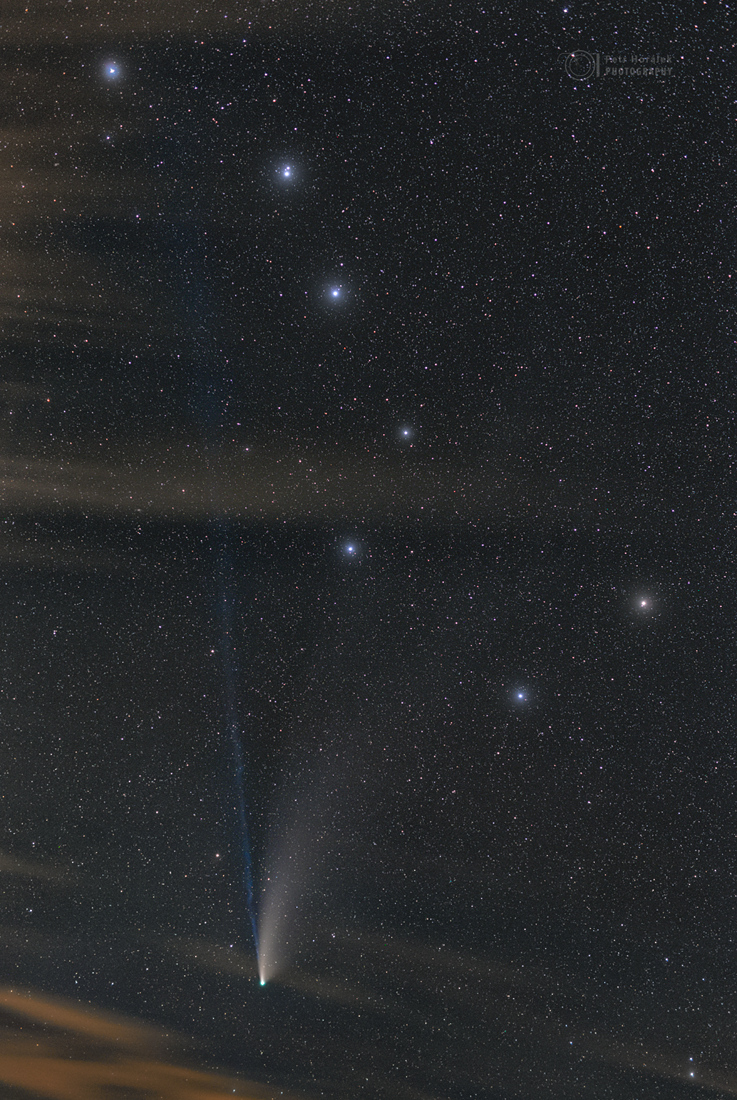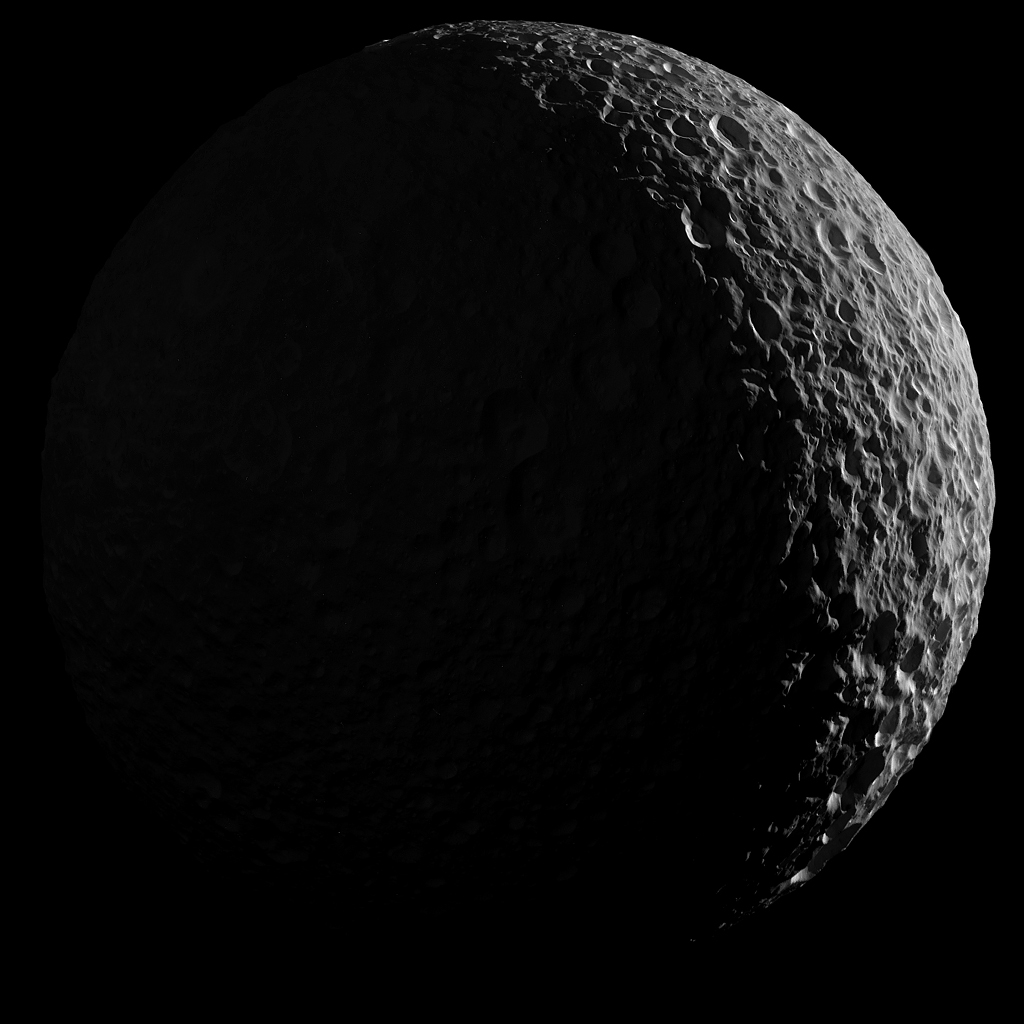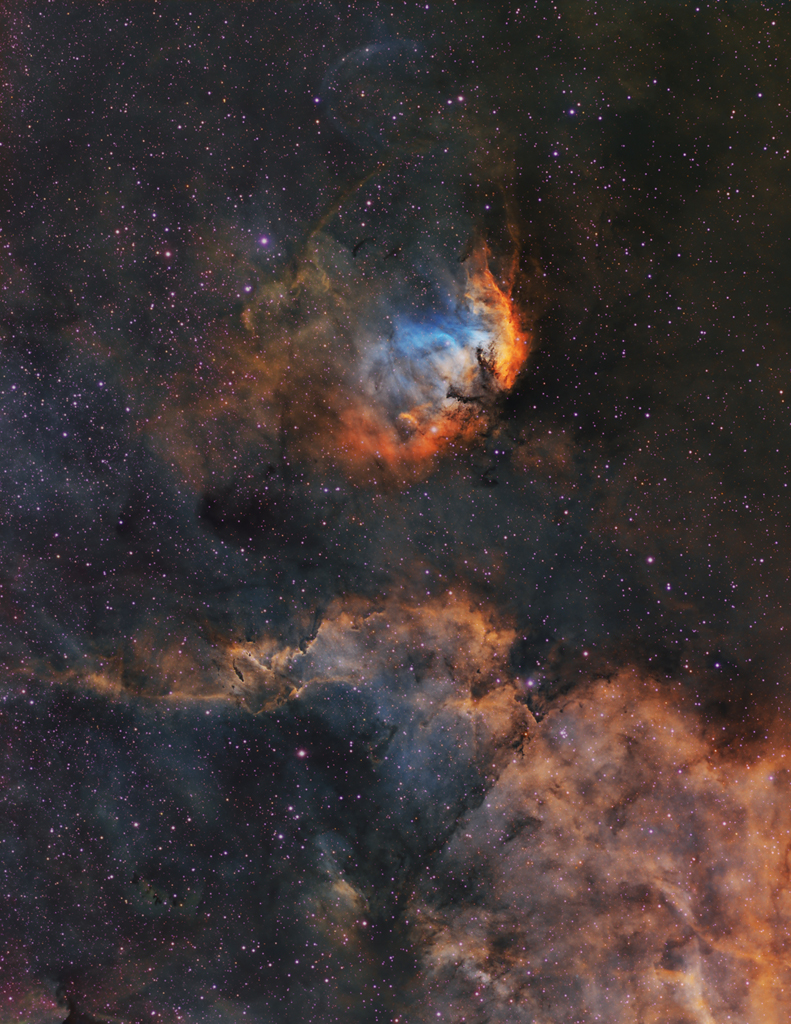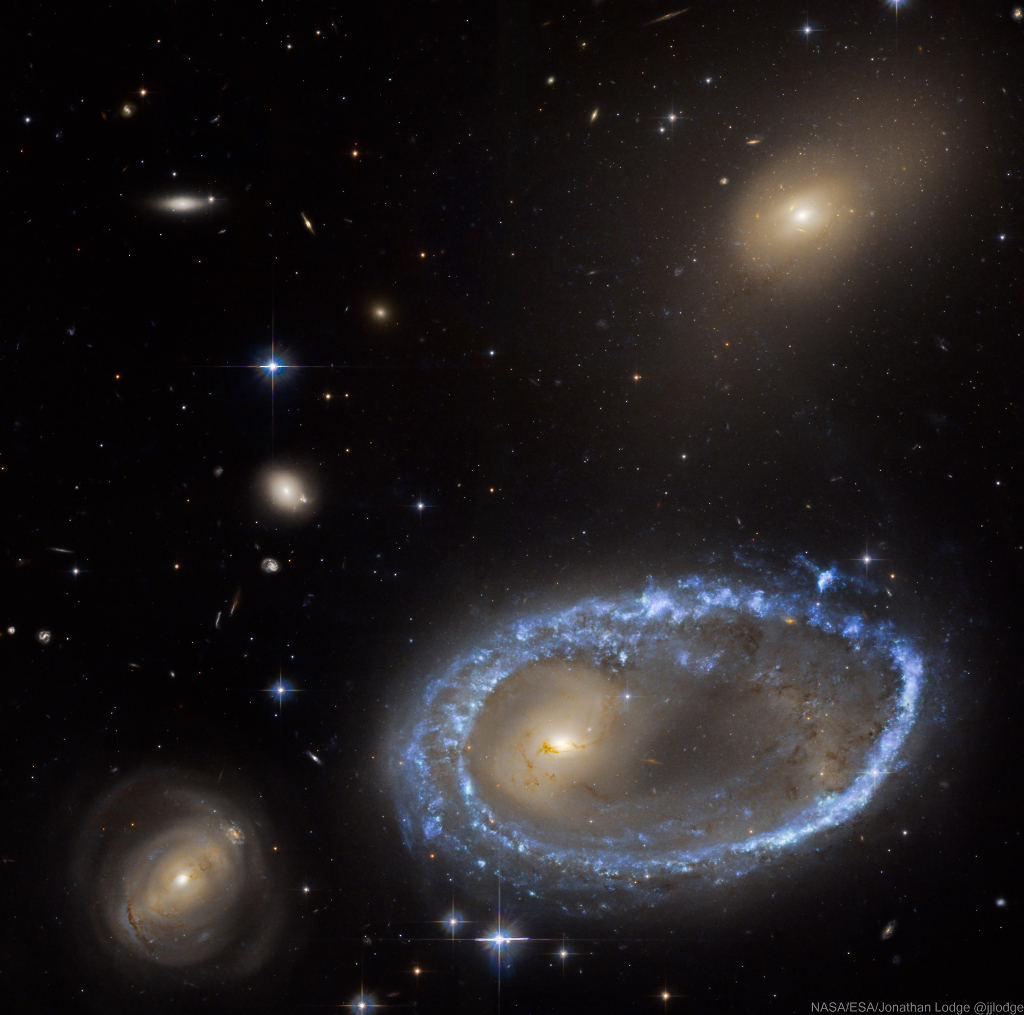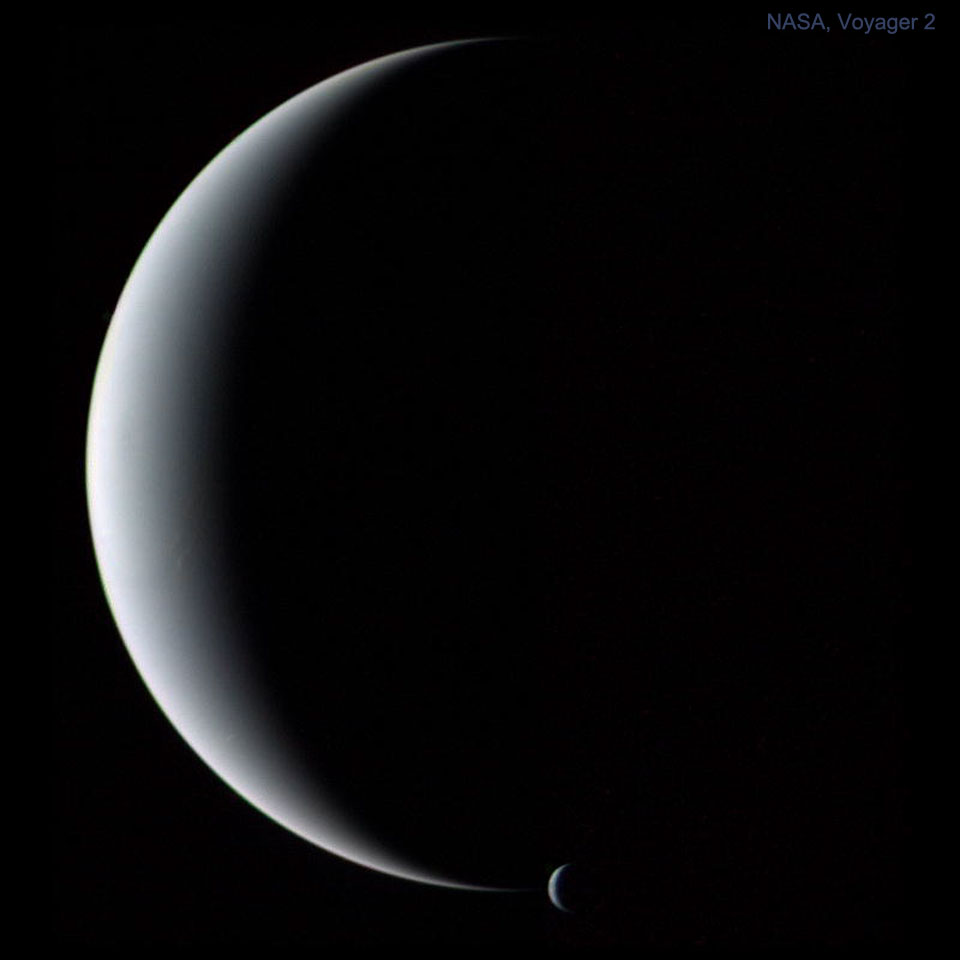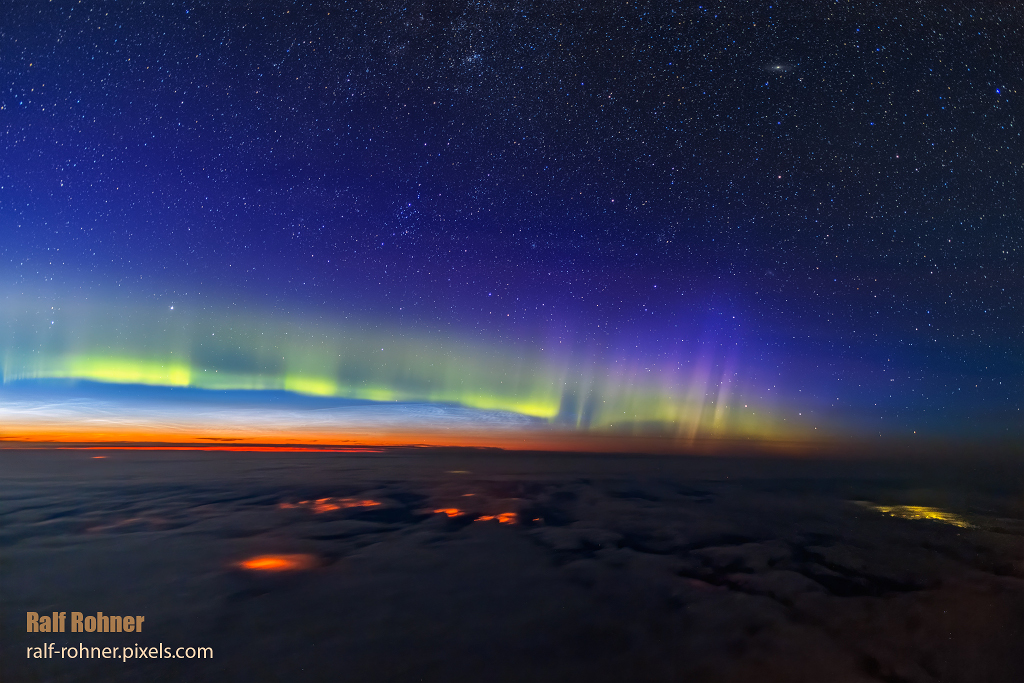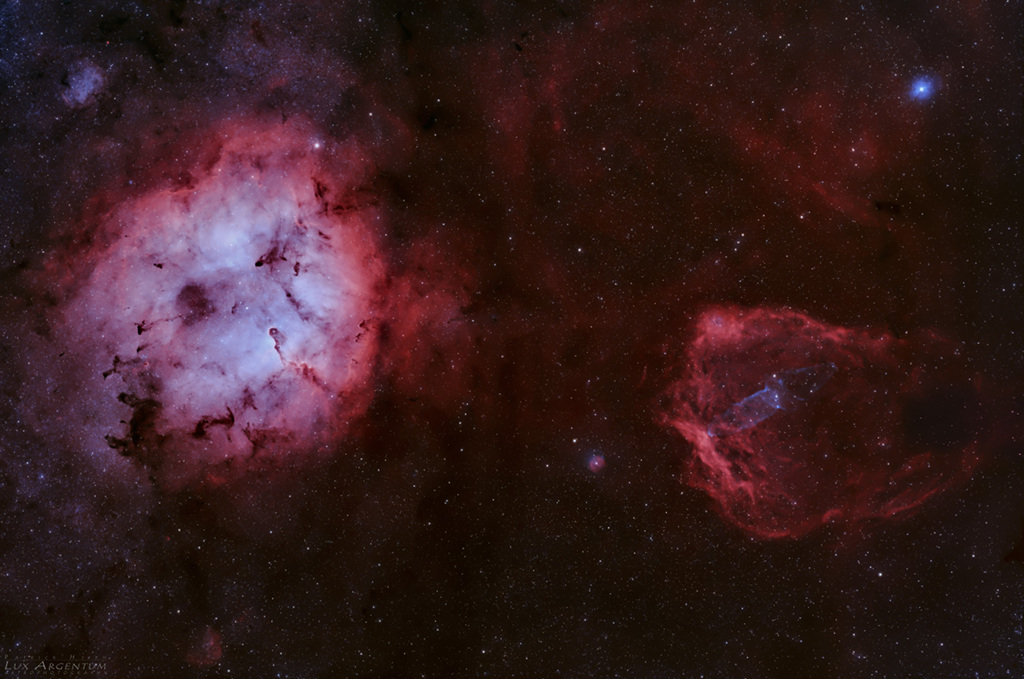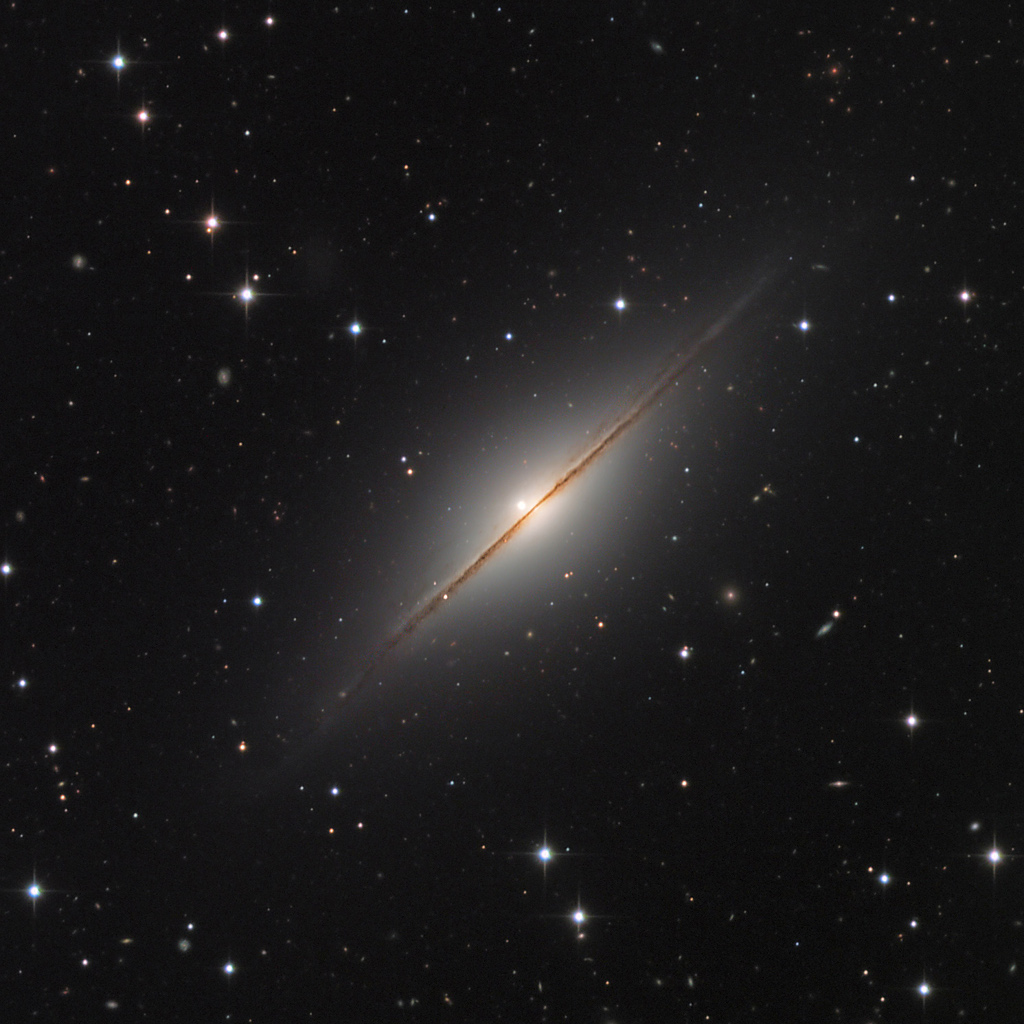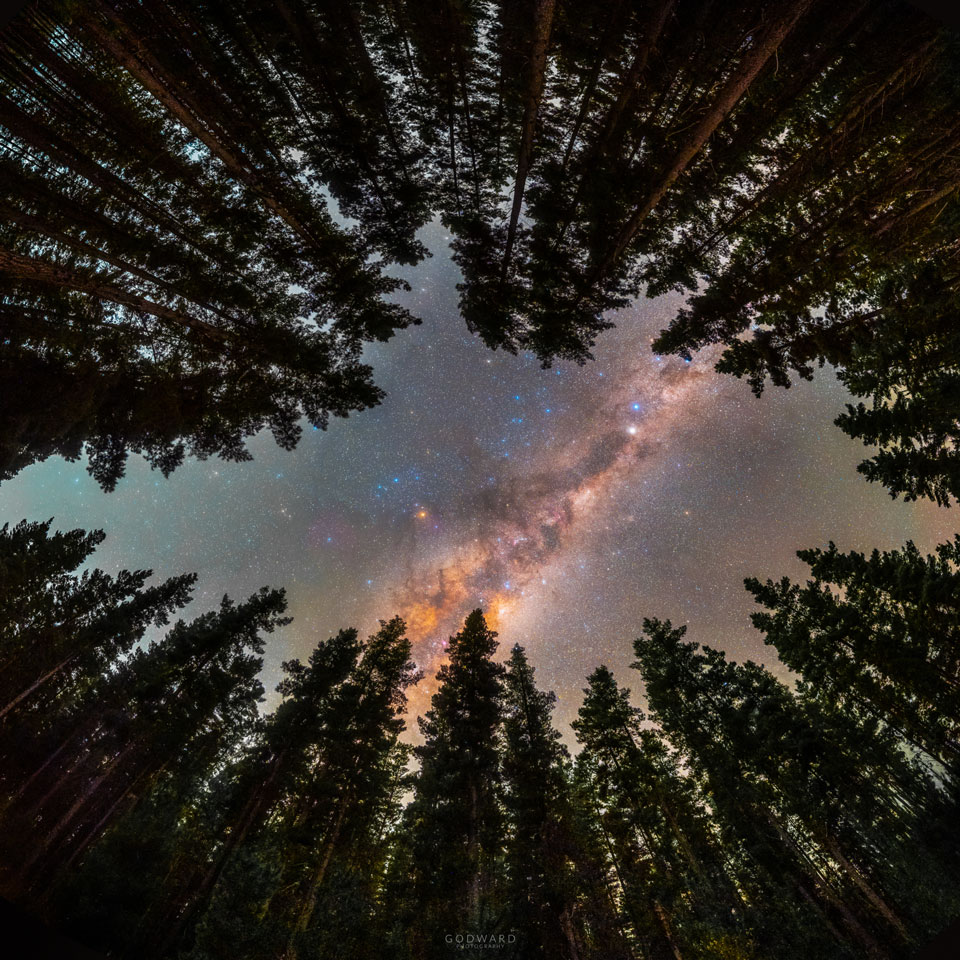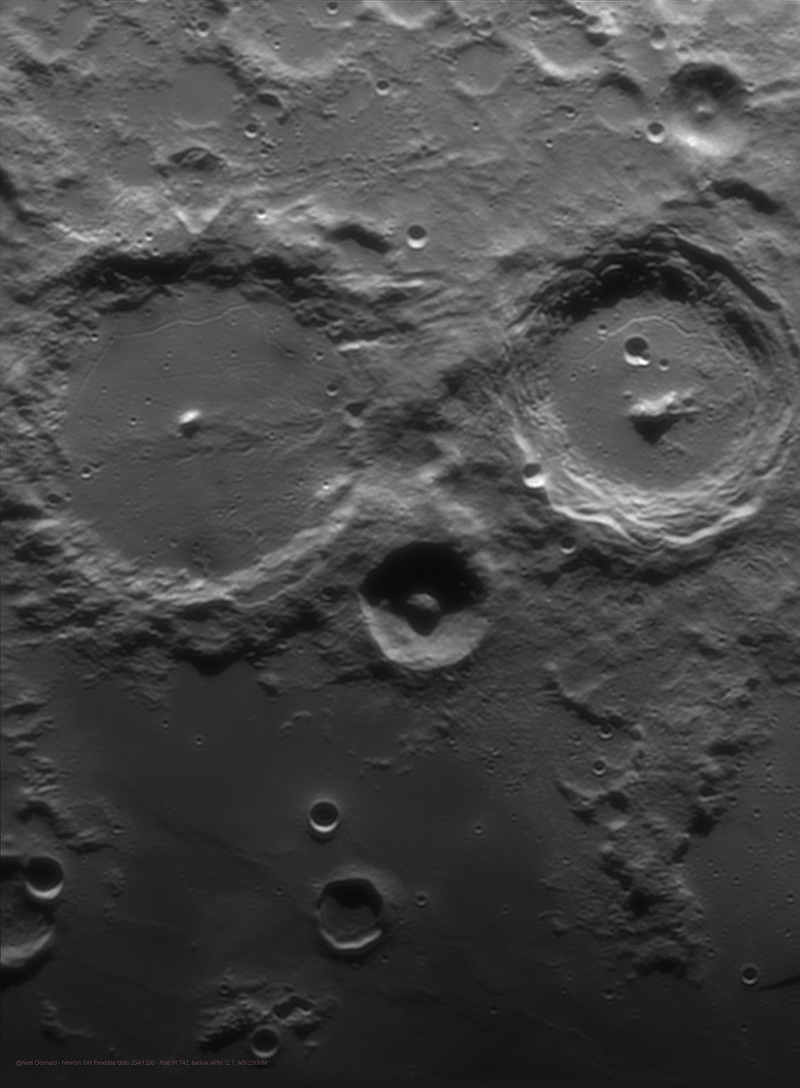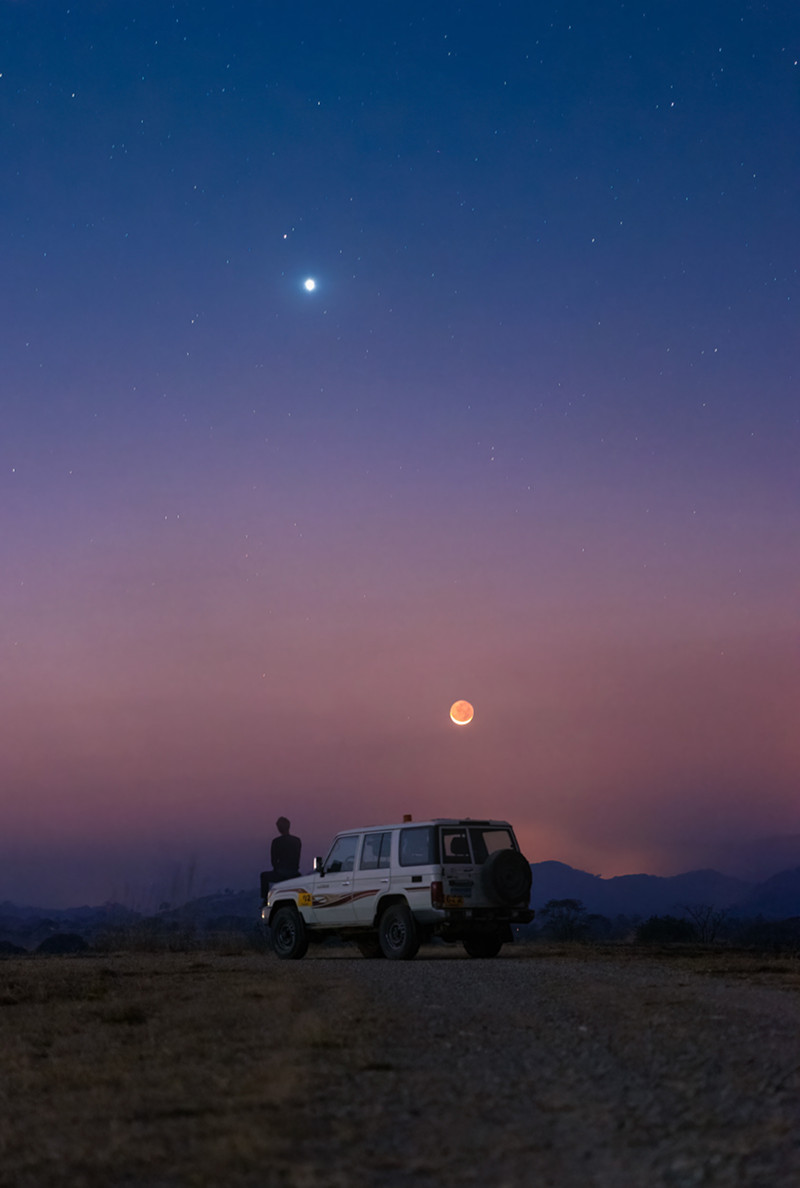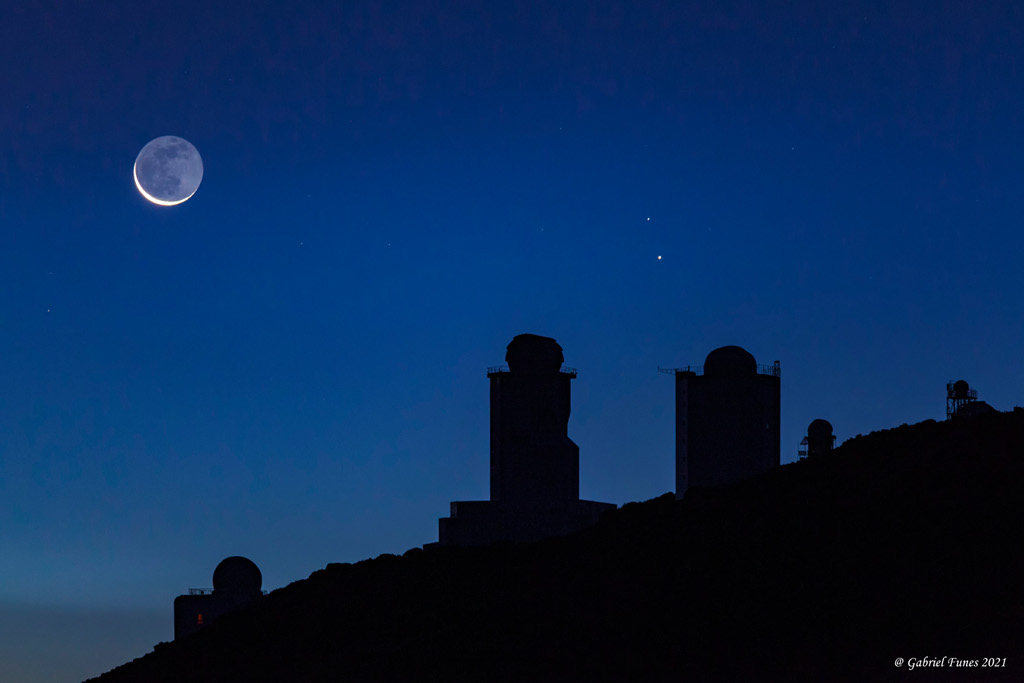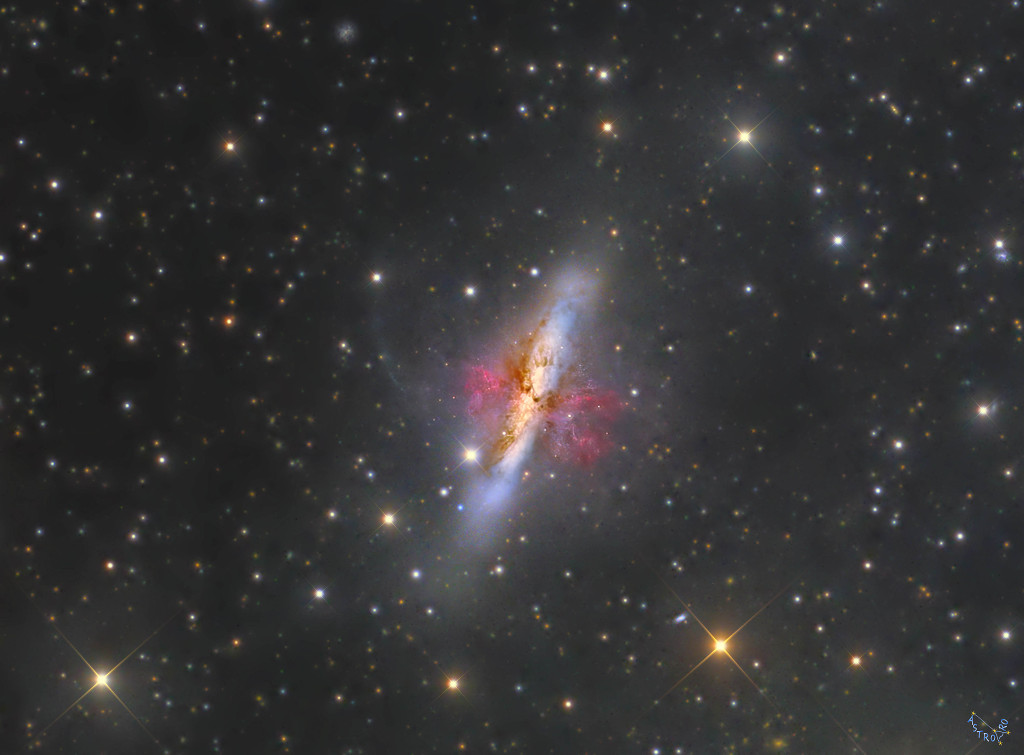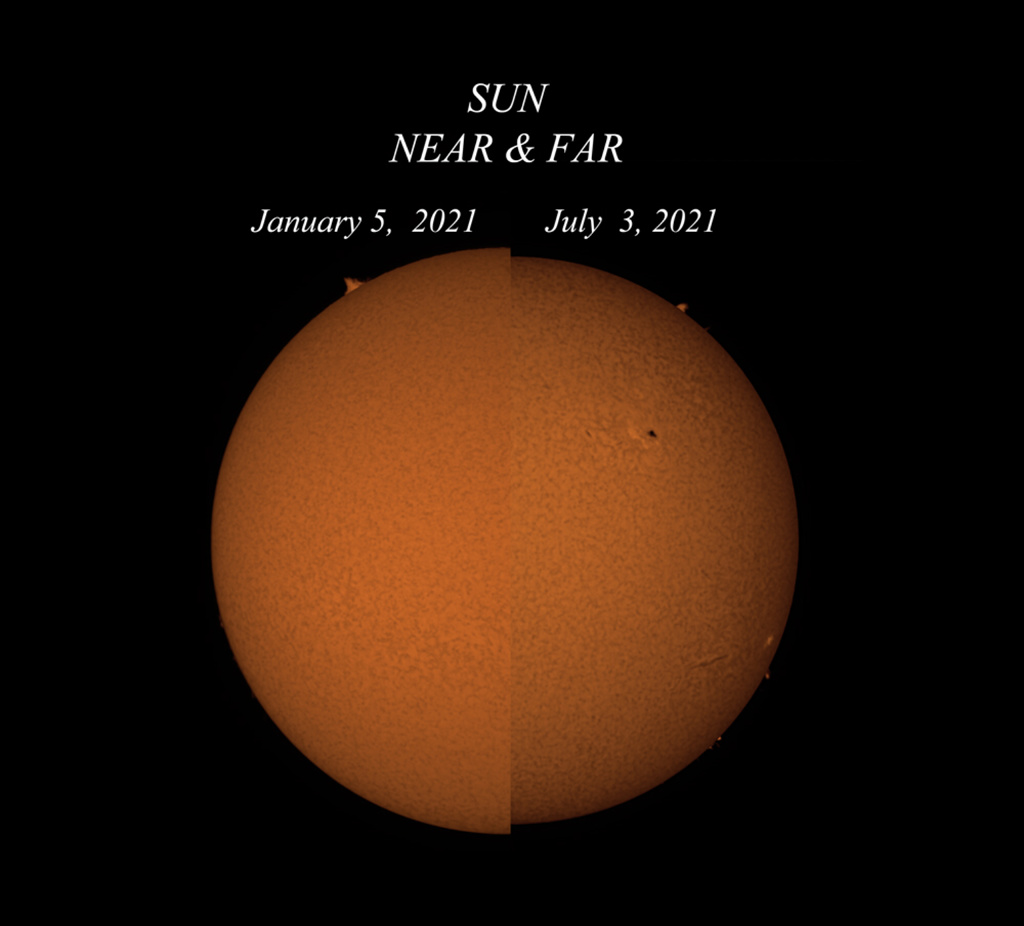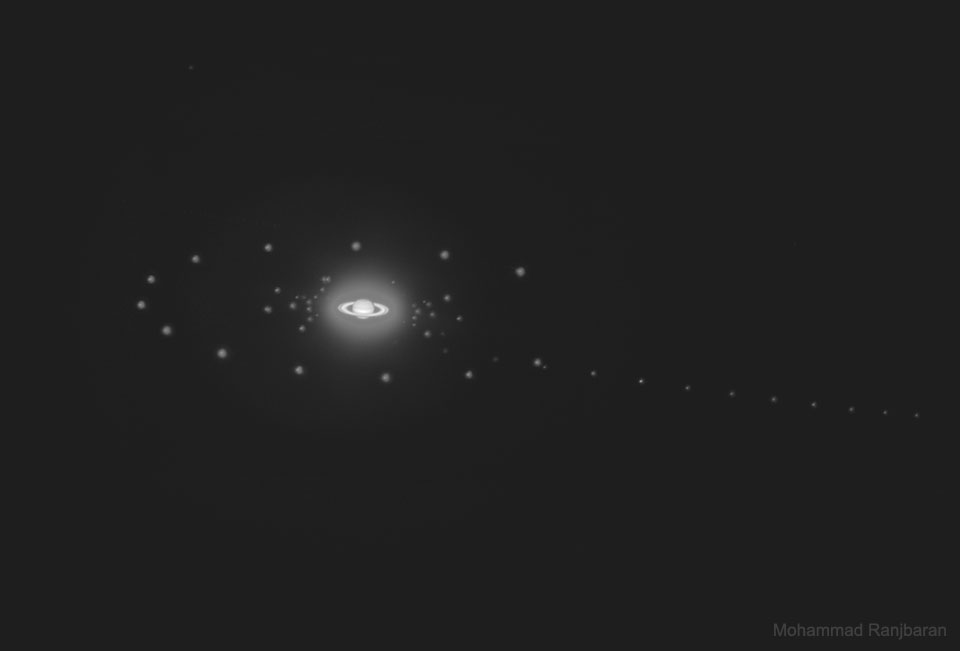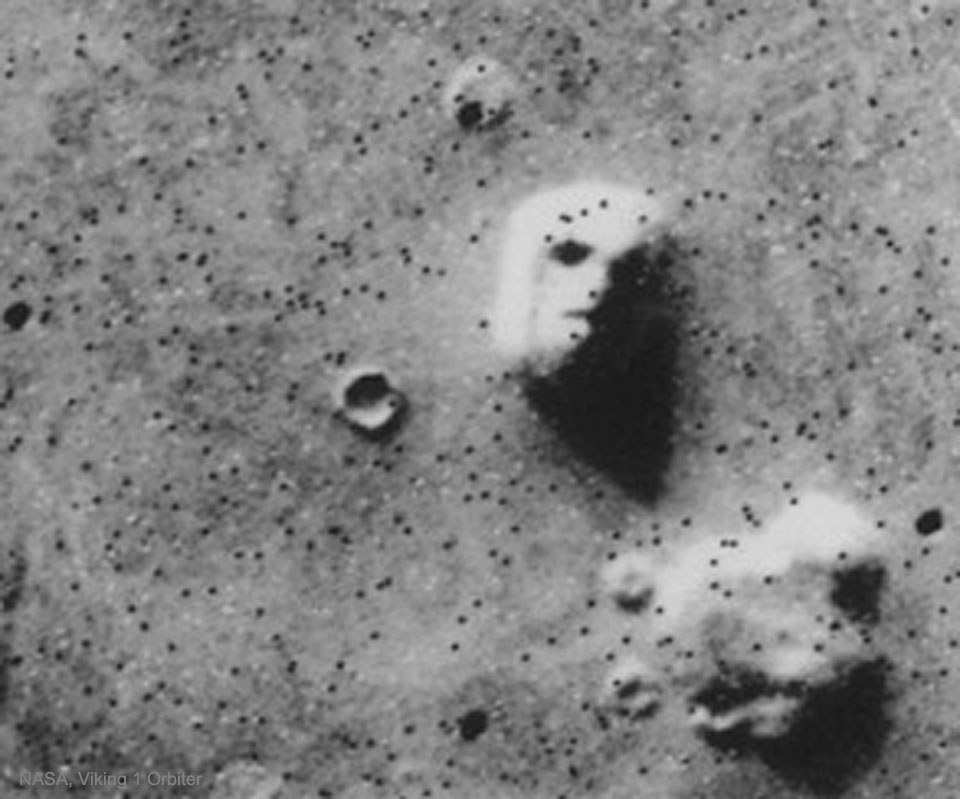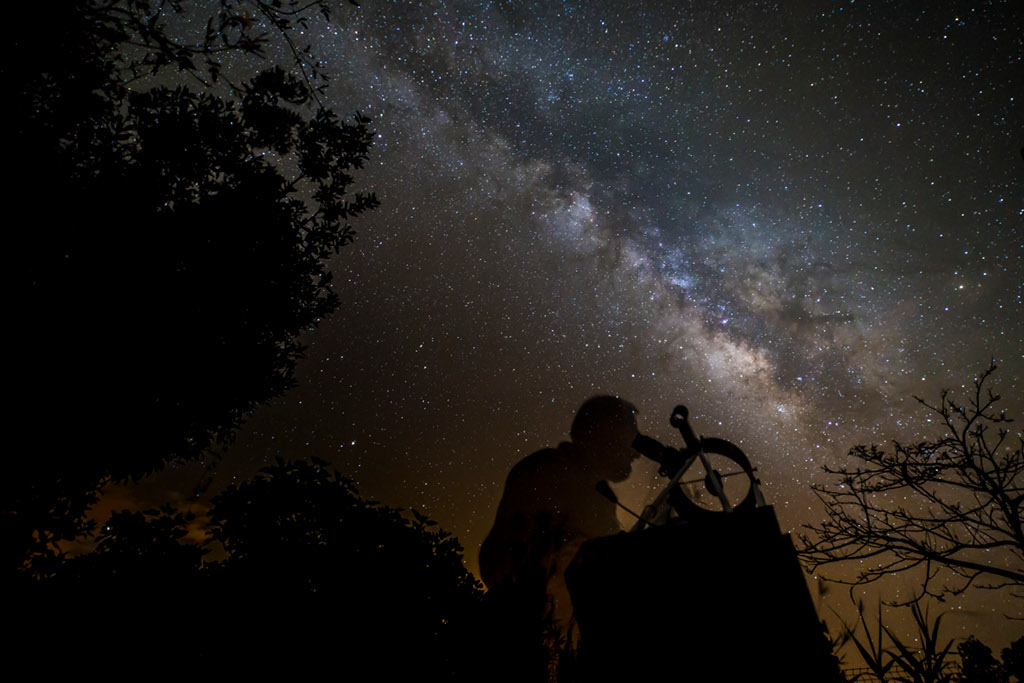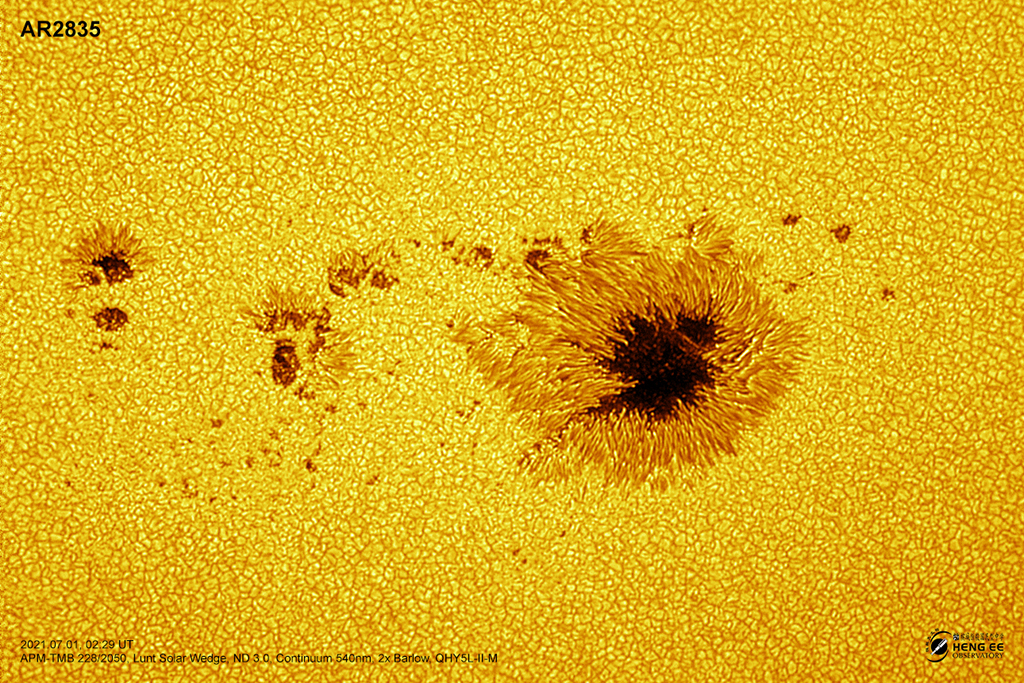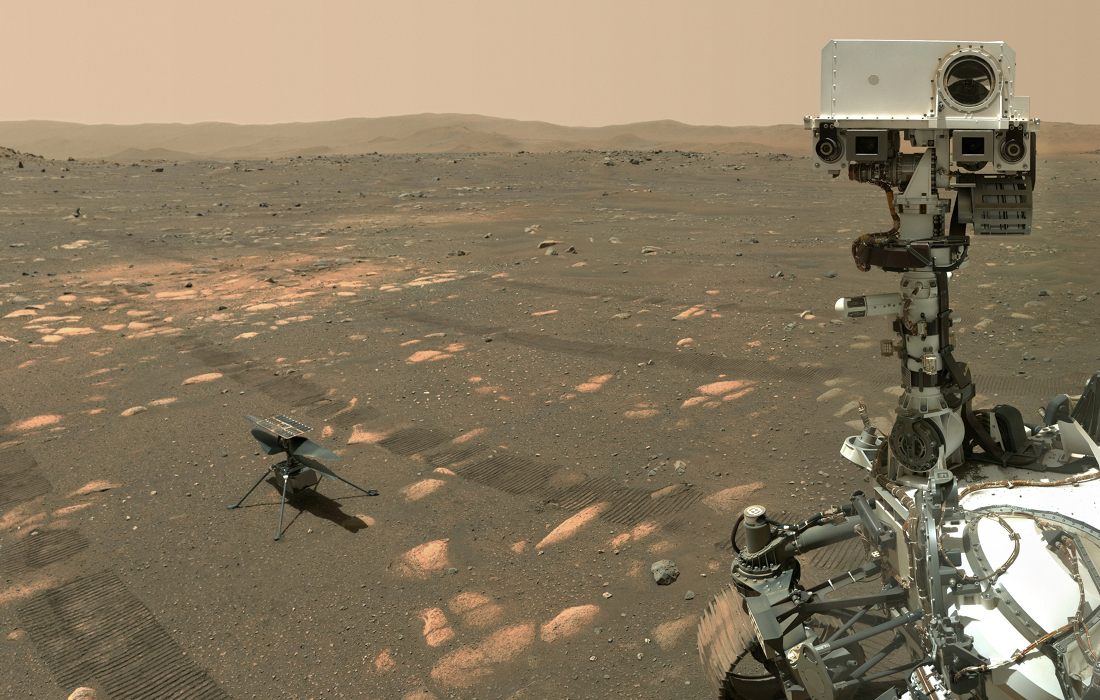Le début du 21ème siècle : le transport aérien c'est tellement développé que certaines zones sont saturées. Sur le plan militaire, l'avion n'est qu'un des composants des systèmes de l'armée et le rôle des pilotes se réduit au profit des systèmes automatiques. 1. Les premiers planeurs. Le premier homme à avoir plané en dirigeant son avion s'appelle Otto Lilienthal, il a effectué plus de 2000 vols avec sa machine en sautant d'une colline. Les premiers vols fait à partir d'un avion muni d'un gouvernail qui permettait de contrôler la trajectoire de celui-ci ont été réalisés par les frères Wright.
Nombre total de pages vues
31/07/2021
AERONAUTIQUE - Histoire de l'aviation - (2)
ASTRONOMY - Remembering NEOWISE
2021 July 31
Image Credit & Copyright: Petr Horalek / Institute of Physics in Opava
Explanation: It was just last July. If you could see the stars of the Big Dipper, you could find Comet NEOWISE in your evening sky. After sunset denizens of the north could look for the naked-eye comet below the bowl of that famous celestial kitchen utensil and above the northwestern horizon. The comet looked like a fuzzy 'star' with a tail, though probably not so long a tail as in this memorable skyview recorded from the Czech Republic on July 23th, 2020, near the comet's closest approach to planet Earth. Photographs of C/2020 F3 (NEOWISE) often did show the comet's broad dust tail and fainter but separate bluish ion tail extending farther than the eye could follow. Skygazers around the world were delighted to witness Comet NEOWISE, surprise visitor from the outer Solar System.
30/07/2021
ASTRONOMY - Mimas in Saturnlight
2021 July 30
Image Credit: Cassini Imaging Team, SSI, JPL, ESA, NASA
Explanation: Peering from the shadows, the Saturn-facing hemisphere of Mimas lies in near darkness alongside a dramatic sunlit crescent. The mosaic was captured near the Cassini spacecraft's final close approach on January 30, 2017. Cassini's camera was pointed in a nearly sunward direction only 45,000 kilometers from Mimas. The result is one of the highest resolution views of the icy, crater-pocked, 400 kilometer diameter moon. An enhanced version better reveals the Saturn-facing hemisphere of the synchronously rotating moon lit by sunlight reflected from Saturn itself. To see it, slide your cursor over the image (or follow this link). Other Cassini images of Mimas include the small moon's large and ominous Herschel Crater.
29/07/2021
ASTRONOMY - The Tulip and Cygnus X-1
2021 July 29
Image Credit & Copyright: Carlos Uriarte
Explanation: This tall telescopic field of view looks out along the plane of our Milky Way Galaxy toward the nebula rich constellation Cygnus the Swan. Popularly called the Tulip Nebula, the brightest glowing cloud of interstellar gas and dust above center is also found in the 1959 catalog by astronomer Stewart Sharpless as Sh2-101. Nearly 70 light-years across the complex and beautiful Tulip Nebula blossoms about 8,000 light-years away, shown in a Hubble palette image that maps the glow of the nebula's sulfur, hydrogen, and oxygen ions into red, green, and blue colors. Ultraviolet radiation from young energetic stars at the edge of the Cygnus OB3 association, including O star HDE 227018, ionizes the atoms and powers the emission from the Tulip Nebula. Also in the field of view is microquasar Cygnus X-1, one of the strongest X-ray sources in planet Earth's sky. Driven by powerful jets from a black hole accretion disk, its fainter bluish curved shock front is only just visible though, directly above the cosmic Tulip's petals near the top of the frame.
28/07/2021
ASTRONOMY - Ring Galaxy AM 0644-741
2021 July 28
Image Credit: NASA, ESA, Hubble, HLA; Processing: Jonathan Lodge
Explanation: The rim of the large blue galaxy at the right is an immense ring-like structure 150,000 light years in diameter composed of newly formed, extremely bright, massive stars. AM 0644-741 is known as a ring galaxy and was caused by an immense galaxy collision. When galaxies collide, they pass through each other and their individual stars rarely come into contact. The large galaxy's ring-like shape is the result of the gravitational disruption caused by a small intruder galaxy passing through it. When this happens, interstellar gas and dust become compressed, causing a wave of star formation to move out from the impact point like a ripple across the surface of a pond. Other galaxies in the field of view are background galaxies, not interacting with AM 0644-741. Foreground spiky stars are within our own Milky Way. But the smaller intruder galaxy is caught above and right, near the top of the frame taken by the Hubble Space Telescope. Ring galaxy AM 0644-741 lies about 300 million light years away toward the southern constellation Volans.
25/07/2021
ASTRONOMY - Crescent Neptune and Triton
2021 July 25
Image Credit: NASA, Voyager 2
Explanation: Gliding silently through the outer Solar System, the Voyager 2 spacecraft camera captured Neptune and Triton together in crescent phase. The elegant picture of the gas giant planet and its cloudy moon was taken from behind just after closest approach in 1989. It could not have been taken from Earth because Neptune never shows a crescent phase to sunward Earth. The unusual vantage point also robs Neptune of its familiar blue hue, as sunlight seen from here is scattered forward, and so is reddened like the setting Sun. Neptune is smaller but more massive than Uranus, has several dark rings, and emits more light than it receives from the Sun.
24/07/2021
ASTRONOMY - The Edge of Space
2021 July 24
Image Credit & Copyright: Ralf Rohner
Explanation: Where does space begin? For purposes of spaceflight some would say at the Karman line, currently defined as an altitude of 100 kilometers (60 miles). Others might place a line 80 kilometers (50 miles) above Earth's mean sea level. But there is no sharp physical boundary that marks the end of atmosphere and the beginning of space. In fact, the Karman line itself is near the transition between the upper mesophere and lower thermosphere. Night shining or noctilucent clouds are high-latitude summer apparitions formed at altitudes near the top of the mesophere, up to 80 kilometers or so, also known as polar mesopheric clouds. Auroral bands of the northern (and southern) lights caused by energetic particles exciting atoms in the thermosphere can extend above 80 kilometers to over 600 kilometers altitude. Taken from a cockpit while flying at an altitude of 10 kilometers (33,000 feet) in the realm of stratospheric aeronautics, this snapshot captures both noctilucent clouds and aurora borealis under a starry sky, looking toward planet Earth's horizon and the edge of space.
23/07/2021
ASTRONOMY - Elephant, Bat, and Squid
2021 July 23
Image Credit & Copyright: Patrick Hsieh
Explanation: Sprawling emission nebulae IC 1396 and Sh2-129 mix glowing interstellar gas and dark dust clouds in this 10 degree wide field of view toward the northern constellation Cepheus the King. Energized by its bluish central star IC 1396 (left) is hundreds of light-years across and some 3,000 light-years distant. The nebula's intriguing dark shapes include a winding dark cloud popularly known as the Elephant's Trunk below and right of center. Tens of light-years long, it holds the raw raw material for star formation and is known to hide protostars within. Located a similar distance from planet Earth, the bright knots and swept back ridges of emission of Sh2-129 on the right suggest its popular name, the Flying Bat Nebula. Within the Flying Bat, the most recently recognized addition to this royal cosmic zoo is the faint bluish emission from Ou4, the Giant Squid nebula.
22/07/2021
ASTRONOMY - NGC 7814: Little Sombrero with Supernova
2021 July 22
Image Credit & Copyright: CHART32 Team,
Explanation: Point your telescope toward the high flying constellation Pegasus and you can find this expanse of Milky Way stars and distant galaxies. NGC 7814 is centered in the pretty field of view that would almost be covered by a full moon. NGC 7814 is sometimes called the Little Sombrero for its resemblance to the brighter more famous M104, the Sombrero Galaxy. Both Sombrero and Little Sombrero are spiral galaxies seen edge-on, and both have extensive halos and central bulges cut by a thin disk with thinner dust lanes in silhouette. In fact, NGC 7814 is some 40 million light-years away and an estimated 60,000 light-years across. That actually makes the Little Sombrero about the same physical size as its better known namesake, appearing smaller and fainter only because it is farther away. In this telescopic view from July 17, NGC 7814 is hosting a newly discovered supernova, dominant immediately to the left of the galaxy's core. Cataloged as SN 2021rhu, the stellar explosion has been identified as a Type Ia supernova, useful toward calibrating the distance scale of the universe.
19/07/2021
ASTRONOMY - Framed by Trees: A Window to the Galaxy
2021 July 19
Image Credit & Copyright: Will Godward
Explanation: The photographer had this shot in mind for some time. He knew that objects overhead are the brightest -- since their light is scattered the least by atmospheric air. He also that knew the core of our Milky Way Galaxy was just about straight up near midnight around this time of year in South Australia. Chasing his mental picture, he ventured deep inside the Kuipto Forest where tall radiata pines blocked out much of the sky -- but not in this clearing. There, through a window framed by trees, he captured his envisioned combination of local and distant nature. Sixteen exposures of both trees and the Milky Way Galaxy were recorded. Antares is the bright orange star to left of our Galaxy's central plane, while Alpha Centauri is the bright star just to the right of the image center. The direction toward our Galaxy's center is below Antares. Although in a few hours the Earth's rotation moved the Galactic plane up and to the left -- soon invisible behind the timber, his mental image was secured forever -- and is featured here.
17/07/2021
ASTRONOMY - Alphonsus and Arzachel
Image Credit & Copyright: Noel Donnard
Explanation: Point your telescope at tonight's first quarter Moon. Along the terminator, the shadow line between night and day, you might find these two large craters staring back at you with an owlish gaze. Alphonsus (left) and Arzachel are ancient impact craters on the north eastern shores of Mare Nubium, the lunar Sea of Clouds. The larger Alphonsus is over 100 kilometers in diameter. A low sun angle highlights the crater's sharp 1.5 kilometer high central peak in bright sunlight and dark shadow. Scouting for potential Apollo moon landing sites, the Ranger 9 spacecraft returned closeup photographs of Alphonsus before it crashed in the crater just northeast (left) of its central mountain in 1965. Alpetragius, between Alphonsus and Arzachel, is the small crater with the deeply shadowed floor and overly large central peak.
16/07/2021
ASTRONOMY - Love and War by Moonlight
2021 July 16
Image Credit & Copyright: Shi Huan
Explanation: Venus, named for the Roman goddess of love, and Mars, the war god's namesake, come together by moonlight in this serene skyview, recorded on July 11 from Lualaba province, Democratic Republic of Congo, planet Earth. Taken in the western twilight sky shortly after sunset the exposure also records earthshine illuminating the otherwise dark surface of the young crescent Moon. Of course the Moon has moved on. Venus still shines in the west though as the evening star, third brightest object in Earth's sky, after the Sun and the Moon itself. Seen here above a brilliant Venus, Mars moved even closer to the brighter planet and by July 13 could be seen only about a Moon's width away. Mars has since slowly wandered away from much brighter Venus in the twilight, but both are sliding toward bright star Regulus. Alpha star of the constellation Leo, Regulus lies off the top of this frame and anticipates a visit from Venus and then Mars in twilight skies of the coming days.
15/07/2021
SANTé/MéDECINE - Le cancer
ASTRONOMY - GW200115: Simulation of a Black Hole Merging with a Neutron Star
2021 July 14
Video Credit: Simulation: S.V. Chaurasia (Stockholm U.), T. Dietrich (Potsdam U. & MPIGP);
Visualization: T. Dietrich (Potsdam U. & MPIGP), N. Fischer, S. Ossokine, H. Pfeiffer (MPIGP)
Explanation: What happens when a black hole destroys a neutron star? Analyses indicate that just such an event created gravitational wave event GW200115, detected in 2020 January by LIGO and Virgo observatories. To better understand the unusual event, the featured visualization was created from a computer simulation. The visualization video starts with the black hole (about 6 times the Sun's mass) and neutron star (about 1.5 times the Sun's mass) circling each other, together emitting an increasing amount of gravitational radiation. The picturesque pattern of gravitational wave emission is shown in blue. The duo spiral together increasingly fast until the neutron star becomes completely absorbed by the black hole. Since the neutron star did not break apart during the collision, little light escaped -- which matches the lack of an observed optical counterpart. The remaining black hole rings briefly, and as that dies down so do the emitted gravitational waves. The 30-second time-lapse video may seem short, but it actually lasts about 1000 times longer than the real merger event.
13/07/2021
ASTRONOMY - Saturn's Iapetus: Painted Moon in 3D
2021 July 13
Image Credit: NASA, ESA, JPL, SSI, Cassini Imaging Team; 3D Rendering: NASA's VTAD
Explanation: What has happened to Saturn's moon Iapetus? Vast sections of this strange world are dark brown, while others are as bright white. The composition of the dark material is unknown, but infrared spectra indicate that it possibly contains some dark form of carbon. Iapetus also has an unusual equatorial ridge that makes it appear like a walnut. To help better understand this seemingly painted moon, NASA directed the robotic Cassini spacecraft orbiting Saturn to swoop within 2,000 kilometers in 2007. Iapetus is pictured here in 3D. A huge impact crater seen in the south spans a tremendous 450 kilometers and appears superposed on an older crater of similar size. The dark material is seen increasingly coating the easternmost part of Iapetus, darkening craters and highlands alike. Close inspection indicates that the dark coating typically faces the moon's equator and is less than a meter thick. A leading hypothesis is that the dark material is mostly dirt leftover when relatively warm but dirty ice sublimates. An initial coating of dark material may have been effectively painted on by the accretion of meteor-liberated debris from other moons.
12/07/2021
ASTRONOMY - Mercury and the Da Vinci Glow
2021 July 10
Image Credit & Copyright: Gabriel Funes
Explanation: On July 8th early morning risers saw Mercury near an old Moon low on the eastern horizon. On that date bright planet, faint glow of lunar night side, and sunlit crescent were captured in this predawn skyscape from Tenerife's Teide National Park in the Canary Islands. Never far from the Sun in planet Earth's sky, the fleeting inner planet shines near its brightest in the morning twilight scene. Mercury lies just below the zeta star of the constellation Taurus, Zeta Tauri, near the tip of the celestial bull's horn. Of course the Moon's ashen glow is earthshine, earthlight reflected from the Moon's night side. A description of earthshine, in terms of sunlight reflected by Earth's oceans illuminating the Moon's dark surface, was written over 500 years ago by Leonardo da Vinci. Waiting for the coming dawn in the foreground are the Teide Observatory's sentinels of the Sun, also known as (large domes left to right) the THEMIS, VTT, and GREGOR solar telescopes.
09/07/2021
AERONAUTIQUE - Histoire de l'aviation - (1) - Les précurseurs
ASTRONOMY - M82: Starburst Galaxy with a Superwind
2021 July 9
Image Credit & Copyright: Team ARO, Alentejo Remote Observatory
Explanation: M82 is a starburst galaxy with a superwind. In fact, through ensuing supernova explosions and powerful winds from massive stars, the burst of star formation in M82 is driving a prodigious outflow. Evidence for the superwind from the galaxy's central regions is clear in sharp telescopic snapshot. The composite image highlights emission from long outflow filaments of atomic hydrogen gas in reddish hues. Some of the gas in the superwind, enriched in heavy elements forged in the massive stars, will eventually escape into intergalactic space. Triggered by a close encounter with nearby large galaxy M81, the furious burst of star formation in M82 should last about 100 million years or so. Also known as the Cigar Galaxy for its elongated visual appearance, M82 is about 30,000 light-years across. It lies 12 million light-years away near the northern boundary of Ursa Major.
08/07/2021
ASTRONOMY - Perihelion to Aphelion
2021 July 8
Image Credit & Copyright: Richard Jaworski
Explanation: Aphelion for 2021 occurred on July 5th. That's the point in Earth's elliptical orbit when it is farthest from the Sun. Of course, the distance from the Sun doesn't determine the seasons. Those are governed by the tilt of Earth's axis of rotation, so July is still summer in the north and winter in the southern hemisphere. But it does mean that on July 5 the Sun was at its smallest apparent size when viewed from planet Earth. This composite neatly compares two pictures of the Sun, both taken with the same telescope and camera. The left half was captured close to the date of the 2021 perihelion (January 2), the closest point in Earth's orbit. The right was recorded just before the aphelion in 2021. Otherwise difficult to notice, the change in the Sun's apparent diameter between perihelion and aphelion amounts to a little over 3 percent.
06/07/2021
ASTRONOMY - Saturn and Six Moons
2021 July 6
Image Credit & Copyright: Mohammad Ranjbaran; MR Thanks: Amir Ehteshami
Explanation: How many moons does Saturn have? So far 82 have been confirmed, the smallest being only a fraction of a kilometer across. Six of its largest satellites can be seen here in a composite image with 13 short exposure of the bright planet, and 13 long exposures of the brightest of its faint moons, taken over two weeks last month. Larger than Earth's Moon and even slightly larger than Mercury,Saturn's largest moon Titan has a diameter of 5,150 kilometers and was captured making nearly a complete orbit around its ringed parent planet. Saturn's first known natural satellite, Titan was discovered in 1655 by Dutch astronomer Christiaan Huygens, in contrast with several newly discovered moons announced in 2019. The trail on the far right belongs to Iapetus, Saturn's third largest moon. The radius of painted Iapetus' orbit is so large that only a portion of it was captured here. Saturn leads Jupiter across the night sky this month, rising soon after sunset toward the southeast, and remaining visible until dawn.
05/07/2021
ASTRONOMY - Simulation: Formation of the First Stars
2021 June 30
Video Credit: Harley Katz (U. Oxford) et al.
Explanation: How did the first stars form? To help find out, the SPHINX computer simulation of star formation in the very early universe was created, some results of which are shown in the featured video. Time since the Big Bang is shown in millions of years on the upper left. Even 100 million years after the Big Bang, matter was spread too uniformly across the cosmos for stars to be born. Besides background radiation, the universe was dark. Soon, slight matter clumps rich in hydrogen gas begin to coalesce into the first stars. In the time-lapse video, purple denotes gas, white denotes light, and gold shows radiation so energetic that it ionizes hydrogen, breaking it up into charged electrons and protons. The gold-colored regions also track the most massive stars that die with powerful supernovas. The inset circle highlights a central region that is becoming a galaxy. The simulation continues until the universe was about 550 million years old. To assess the accuracy of the SPHINX simulations and the assumptions that went into them, the results are not only being compared to current deep observations, but will also be compared with more direct observations of the early universe planned with NASA's pending James Webb Space Telescope.
INSECTES - Le moustique-tigre
04/07/2021
ASTRONOMY - The Face on Mars
2021 July 4
Image Credit: NASA, Viking 1 Orbiter
Explanation: Wouldn't it be fun if clouds were castles? Wouldn't it be fun if the laundry on the bedroom chair was a superhero? Wouldn't it be fun if rock mesas on Mars were interplanetary monuments to the human face? Clouds, though, are floating droplets of water and ice. Laundry is cotton, wool, or plastic, woven into garments. Famous Martian rock mesas known by names like the Face on Mars appear quite natural when seen more clearly on better images. Is reality boring? Nobody knows why some clouds make rain. Nobody knows if life ever developed on Mars. Nobody knows why the laundry on the bedroom chair smells like root beer. Scientific exploration can not only resolve mysteries, but uncover new knowledge, greater mysteries, and yet deeper questions. As humanity explores our universe, perhaps fun -- through discovery -- is just beginning.
03/07/2021
SANTé/MéDECINE - L'alcool et le foie
Les discours anti-alcool, ça fait plusieurs années que les professionnels de la santé ne cessent d’en faire. Pourtant, le nombre de buveurs continue de grimper et ils sont de plus en plus jeunes. Si l’alcool en soi ne pose pas problème, c’est son excès qui est vivement pointé du doigt en raison de son impact sur la santé notamment le foie, et vous allez vite comprendre pourquoi.
- La fibrose qui est une accumulation de tissu cicatriciel dans le foie
- La cirrhose qui se manifeste par un dysfonctionnement total des fonctions hépatiques.
ASTRONOMY - Along the Milky Way
2021 July 3
Image Credit & Copyright: Rolf Weisenfeld
Explanation: You can't walk along the Milky Way. Still, under a dark sky you can explore it. To the eye the pale luminous trail of light arcing through the sky on a dark, moonless night does appear to be a path through the heavens. The glowing celestial band is the faint, collective light of distant stars cut by swaths of obscuring interstellar dust clouds. It lies along the plane of our home galaxy, so named because it looks like a milky way. Since Galileo's time, the Milky Way has been revealed to telescopic skygazers to be filled with congeries of innumerable stars and cosmic wonders.
02/07/2021
ASTRONOMY - AR2835: Islands in the Photosphere
2021 July 2
Image Credit & Copyright: Michael Teoh, Heng Ee Observatory, Penang, Malaysia
Explanation: Awash in a sea of incandescent plasma and anchored in strong magnetic fields, sunspots are planet-sized dark islands in the solar photosphere, the bright surface of the Sun. Found in solar active regions, sunspots look dark only because they are slightly cooler though, with temperatures of about 4,000 kelvins compared to 6,000 kelvins for the surrounding solar surface. These sunspots lie in active region AR2835. The largest active region now crossing the Sun, AR2835 is captured in this sharp telescopic close-up from July 1 in a field of view that spans about 150,000 kilometers or over ten Earth diameters. With powerful magnetic fields, solar active regions are often responsible for solar flares and coronal mass ejections, storms which affect space weather near planet Earth.
01/07/2021
ASTRONOMY - Perseverance Selfie with Ingenuity
2021 July 1
Image Credit: NASA, JPL-Caltech, MSSS
Explanation: On sol 46 (April 6, 2021) the Perseverance rover held out a robotic arm to take its first selfie on Mars. The WATSON camera at the end of the arm was designed to take close-ups of martian rocks and surface details though, and not a quick snap shot of friends and smiling faces. In the end, teamwork and weeks of planning on Mars time was required to program a complex series of exposures and camera motions to include Perseverance and its surroundings. The resulting 62 frames were composed into a detailed mosiac, one of the most complicated Mars rover selfies ever taken. In this version of the selfie, the rover's Mastcam-Z and SuperCam instruments are looking toward WATSON and the end of the rover's outstretched arm. About 4 meters (13 feet) from Perseverance is a robotic companion, the Mars Ingenuity helicopter.
PRATIQUE - Enfin une Astuce Pour Que la Grille du Barbecue ne colle plus
Vous en avez assez que de la nourriture reste collée sur la grille du barbecue ? Que ça soit du poisson, comme les sardines, ou de la viande, ça s'accroche toujours sur la grille. Résultat, il faut frotter bien fort pour nettoyer la grille, sinon elle s'encrasse rapidement. Heureusement, il existe un truc incroyable pour que les aliments ne restent plus accrochés sur le bbq. L'astuce est de frotter un oignon sur la grille avant de faire cuire les aliments.
ASTRONOMY - Globular Cluster M15 Deep Field
2025 November 26 Globular Cluster M15 Deep Field Image Credit & Copyright: Alvaro Ibanez Perez Explanation: Stars, like bees, swarm a...

-
2022 September 26 All the Water on Planet Earth Illustration Credit: Jack Cook, Adam Nieman, Woods Hole Oceanographic Institution ; Data ...
-
2025 May 11 The Surface of Venus from Venera 14 Image Credit: Soviet Planetary Exploration Program , Venera 14 ; Processing & Copyri...


